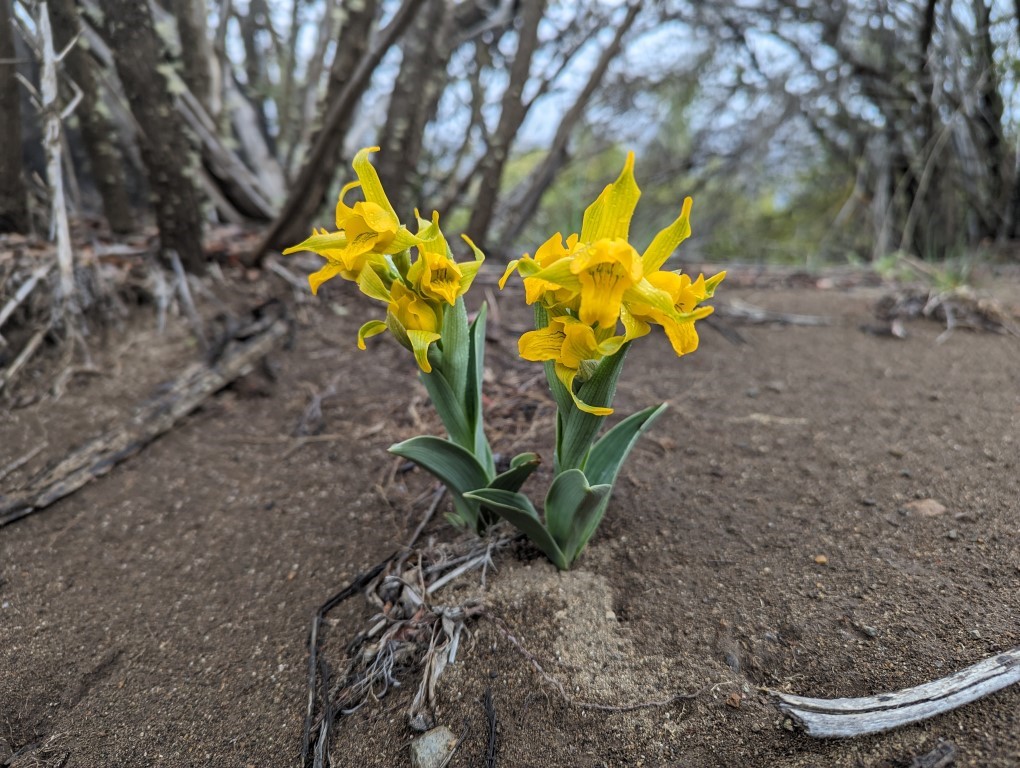
This is a life less ordinary. It’s pretty much been most of our adult life. Whatever its drawbacks, the benefits are many- the most important of which is being in a constant state of change. It can’t get old if its always new! I love looking out the door at a changing scenery most every day. I know it can’t last forever, but I’m soaking it up.
Before you read this, you might want to use the bathroom, eat a meal, make a coffee, write your will- because this is a long one!

Nearly 3 weeks ago, we set off exploring a new and famous part of Argentina, the beautiful Lakes District. There’s a section of Route 40 called the Route of the Seven Lakes, chucker block full of tourists in summer, not too many this time of year. On the one hand, its great to see all of the new leaves, the bright green of the willows, the still snowcapped mountains and the paucity of people. On the other hand, the higher mountains are inaccessible for the hikes that we would want to do and we might be surrounded by lakes, but even I am not interested in getting in any of them even if we did have some really sunny days. So we did some lower elevation walks instead, marveled at the pretty views, waterfalls, looked at sheep, patted horses, smelled flowers and drove the curvy, well maintained park roads over a few days. There’s way more than seven lakes. A side trip out a dirt road led to a cute little village called Villa Traful and we walked to a couple of waterfalls. My Lonely Planet described it as “achingly beautiful” which gave us a laugh. I mean, it was very pretty but I’ve ached in more beautiful before.

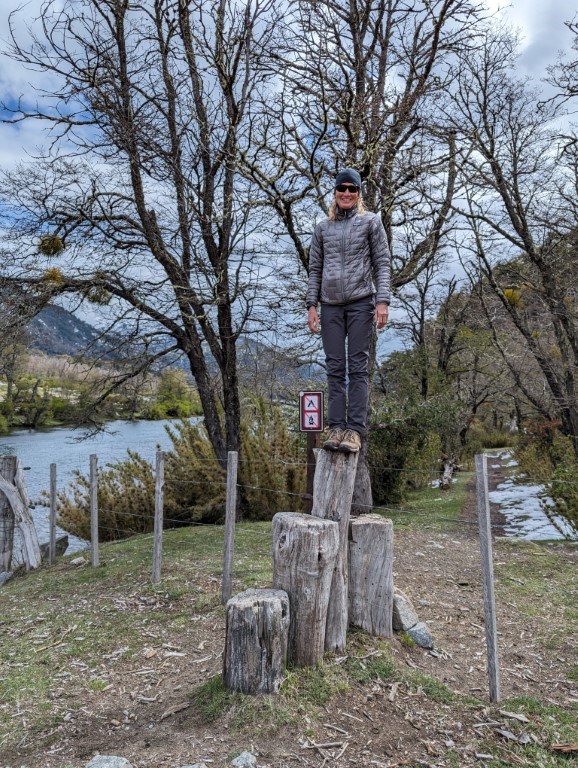
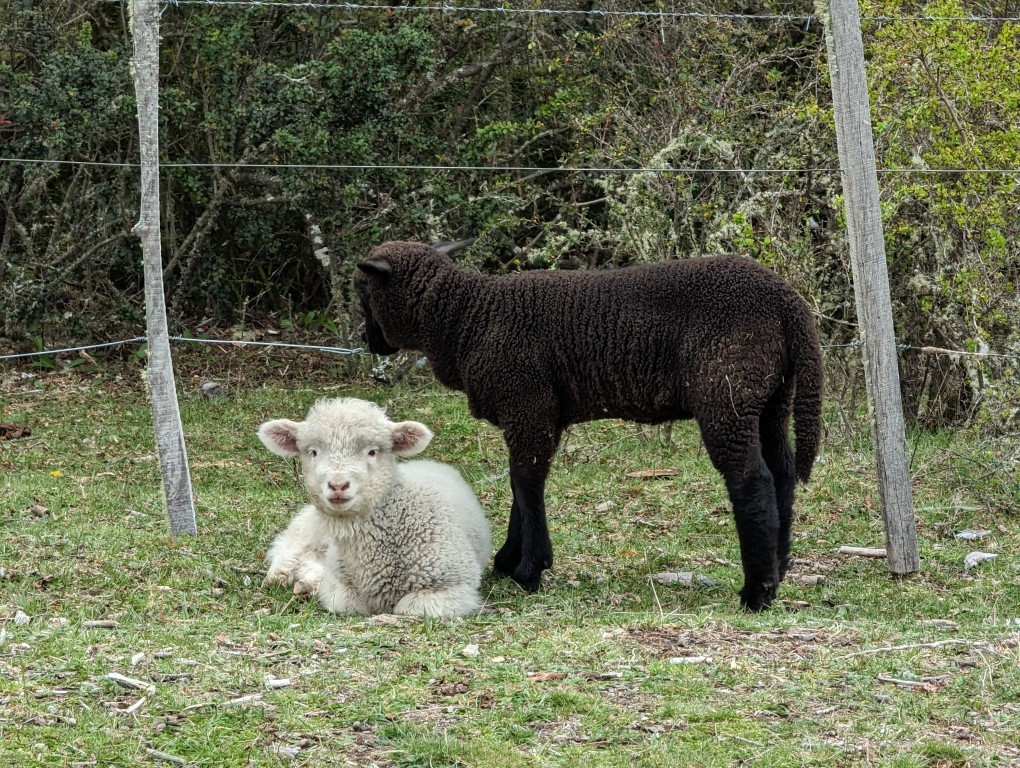

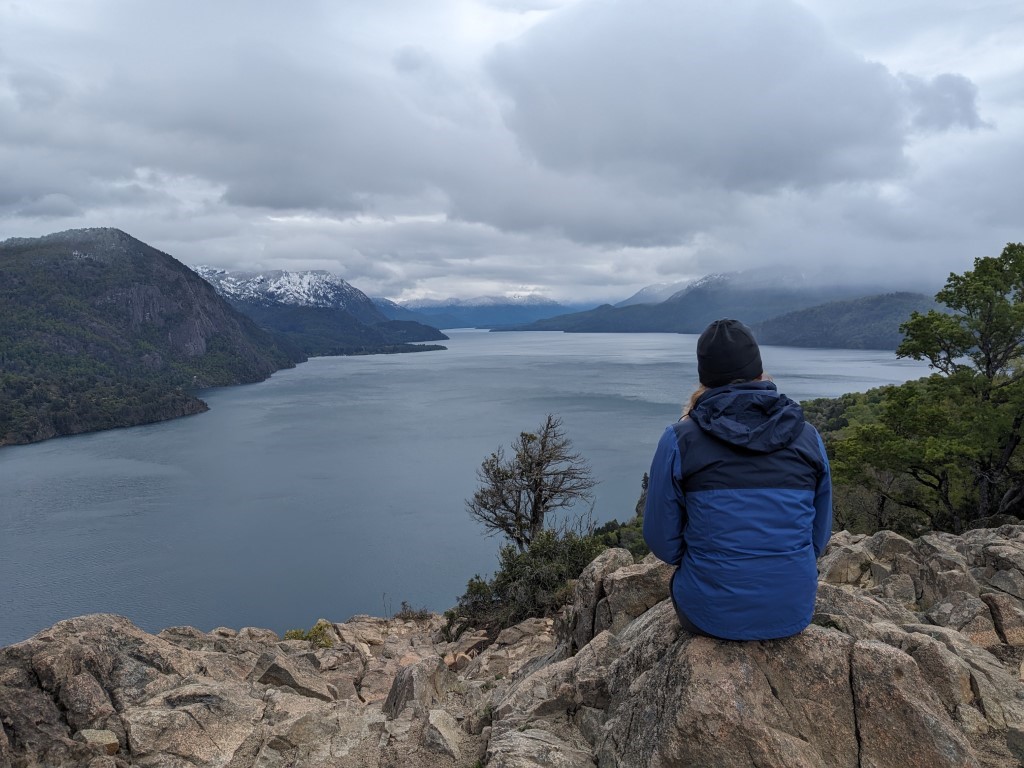


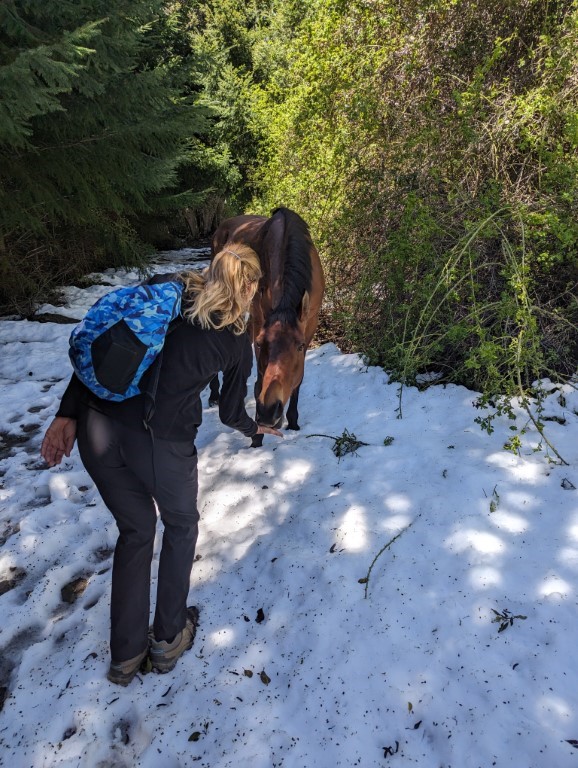
Somewhere around this time, we had a switch burn up one morning on one of the heat exchangers on our furnace. We first noticed pulsing of the blower fan and then I smelled an electrical smell and then opened up Jon’s clothes locker to a bunch of smoke. Scary! Just a piece of crap switch. We had to have Jon’s clothes washed twice at a laundromat to get the smell out. And I repainted everything to help remove any residual.
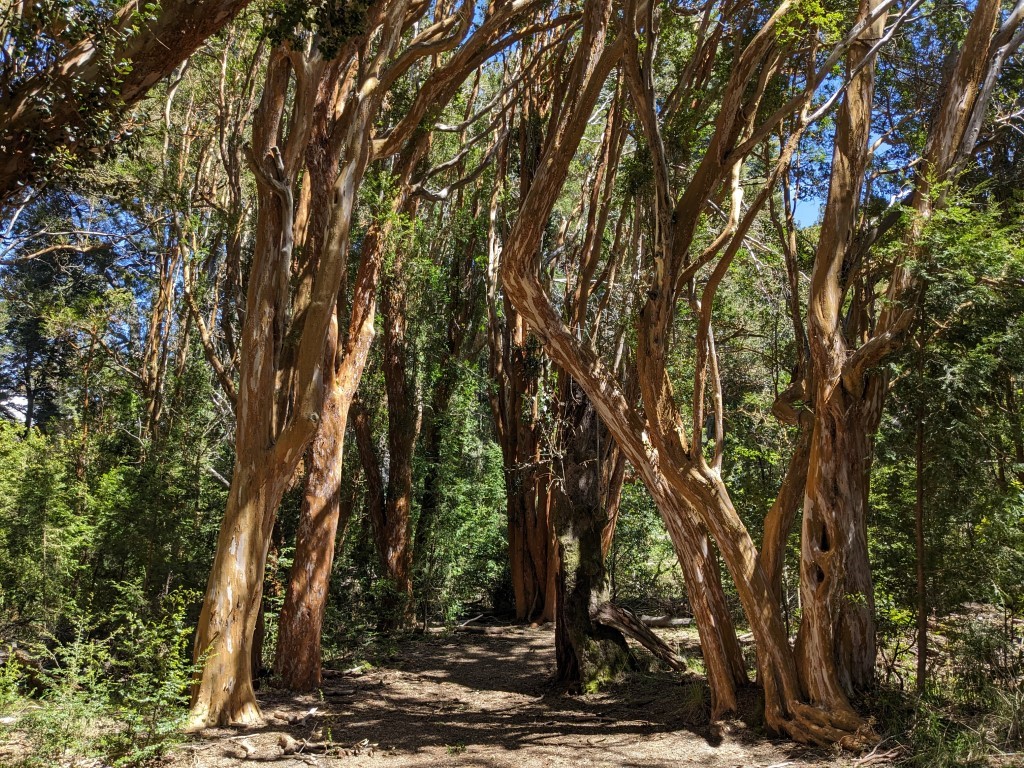




My favorite town, Villa La Angostura, was at the end of the section. It sits on Lago Nahuel Huapi, surrounded by lots of parks. When we arrived it was a marathon weekend. It made the town crazy busy and I felt nostalgic for our marathon days but, you can’t do it all. We camped out of the hassle in a grove of balsams that smelled so good. I’ve always wished I could bottle up that smell and keep it with me all the time. We parked right near the Arrayanes National Park where we wanted to hike. You can take a long hike out to the end of the peninsula on a wooded trail and end up in a stand of Arrayanes, a cinnamon barked tree that belongs to the myrtle family. I guess the family or families that owned the land before it became park loved these trees and was culling out anything else that grew over years so they were dominant. They are very old now. Now as a park, they let everything grow so there aren’t as many and some have suffered a disease, so there are less. Well it was still very pretty and a totally perfect day for hiking, all 3 of us had been missing these long hiking days. At the tip of the peninsula, there was a little cafe where people who took the ferry over congregated and we ate our lunch there and got a piece of pie before walking back among few people. It was a great day.
Full of fancy clothes shoppes, the town offered lots of opportunities to buy most major brands and I did find some gloves (not expecting to be hot anytime soon except for hot flashes) but any of the other high tech brands were nutty expensive, as are most imports, that I’m not sure who buys this stuff. Argentina does have high import duties but if you can stick to items made in house so to speak, it’s reasonable. And some brand names like Goose IPA from the US are produced under license here so we can easily get this beer for pennies. As long as, like with most every beer here, you want at least a pint. Fine by us! Because that’s the smallest size they sell! It’s so nice to be able to walk down the wine isle and have a wide selection of great wines to choose from at a great price given the exchange rate.
We were really excited to get to the town of Bariloche as people had told us it was really nice. I think the surrounding area is more special although we did find a decent bakery where we could get sourdough bread. That was a score. We’ve noticed Argentina has more than its fair share of graffiti and we saw a lot of it in Bariloche. We parted ways with Ivan there for now because he needed to stay and pick up parts for his van and we headed outside of Bariloche to a trailhead. It’s funny how things can work out. He had a leaking plug in the transmission box but after soaking the o-rings in PB Blaster and reinstalling it, the leak stopped. Good thing since the part takes forever to arrive. At least he’s able to drive still. And now he has his part. We hope to catch up to each other soon.





This area has a good network of refugios that you can hike to and stay in that are open most if not all of the year. I wanted to hike up to Refugio Frey after seeing beautiful pictures of the scenery up there. We staged at a pretty lakeside campground right at the trailhead. The weather had turned to crap but we decided to do the hike anyway. We went in very light drizzle and hit snow at the top but were able to eat our lunch in the hut and get a hot chocolate. The staff were so kind and it’s so nice to be able to come in out of the cold to a homey atmosphere. I like the culture of the huts and the history. It is a microcosm all its own. I wished we’d had our stuff to stay overnight. But it was also good to get back down to the truck a few hours later and be home. Had it been a great weather day, we would have seen the beautiful towers but to tell you the truth, I just love to be out hiking, in good weather or not. But Ivan went a couple days later and here’s what we were supposed to see.
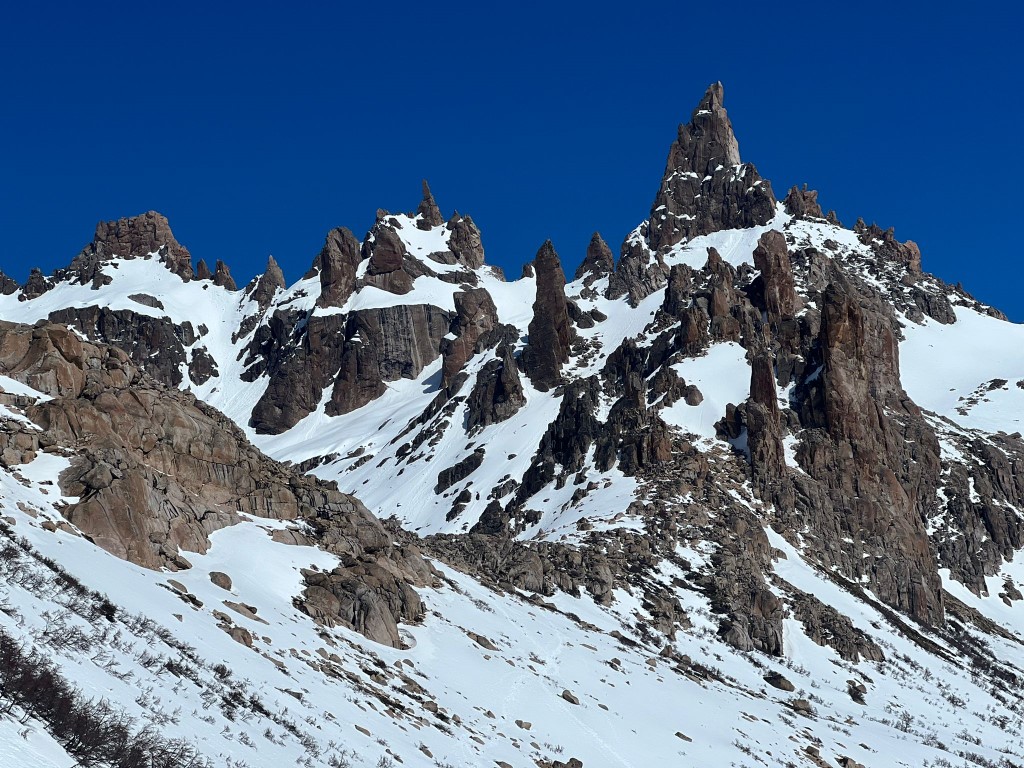



We visited the old hippie town of El Bolson which had a nice artesanal market around a cute park with little eateries. We sat in a garden and had a beet burger (really!) and got some of Argentina’s fantastic ice cream before moving to what is really just a country intersection outside town called Wharton. We wanted to hike the Blue Canyon. Once again, you can camp at the trailhead and there are tons of refugios up in the hills. We really didn’t know enough at this point to arrange any overnights but we’d like to return to this area and stay in them. But for now, we did a long day hike up through the canyon to many viewpoints and stopped at a few of the refugios to check them out. It was a gorgeous day and a blue light reflected off the blue river onto the rocks the way tropical water reflects blue light up onto the bottoms of the clouds in the Bahamas. We came back and sat outside in the late afternoon sun looking at the mountains we’d just climbed into while sheep occasionally went jingling by.

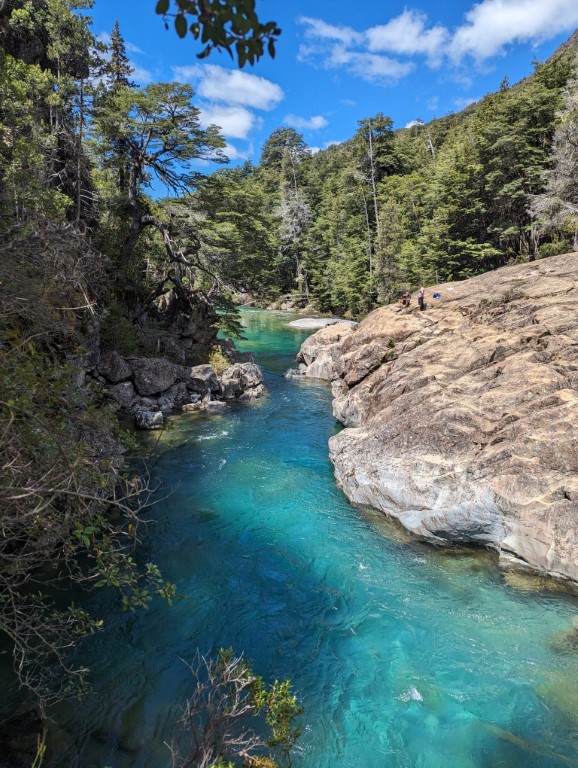














The next morning we moved a little southward over to Lago Epuyen, which is crystal clear blue and open to only non-motorized boats. It was time to finally put the pack rafts in since it had been awhile. The roadsides have been graced with beautiful yellow flowers lately and they were billowing out from the lakeshore as well. With all of the mountain reflections and still water, it made for some really pretty paddling. The rafts are so easy to put together, carry and put away again. We can’t wait to take them on some moving water soon.
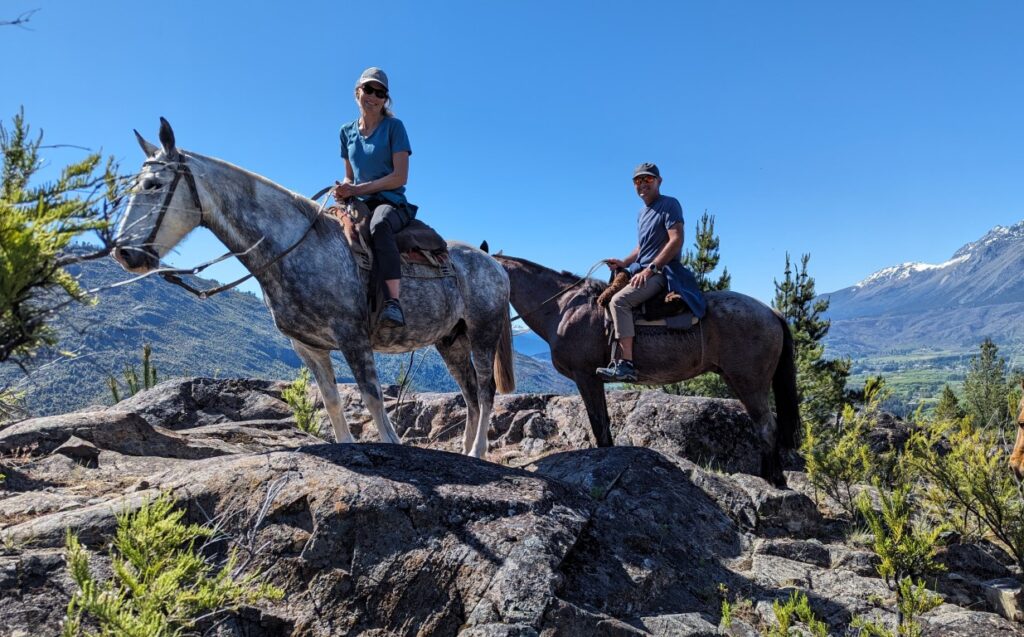


We got the rafts stowed, had some lunch and then went horseback riding. We’d been wanting to do this for some time now but didn’t want a “canned” experience and I really wanted to be able to gallop all I wanted so I asked this ahead of time. Paulo and his wife Erika operate a small horseback riding business in the summer along the same lake we kayaked at. In the off season, which is still now, they ride from their house a bit above the lake in a beautiful valley. So that’s where we rode, on wooded trails that opened up to wide, cliffy views. Oh, and we gallopped all we wanted! Just the fact that we aren’t experienced riders by any stretch cracks me up as we go blasting along trying to just stay on the horse. It takes all of my muscles to hang on to whatever I can but man is it fun! Meanwhile, Paulo, the owner who is guiding us is just like all the other gauchos. He can sit on a horse like a sack of potatoes no matter how fast he’s flying along, he doesn’t leave the saddle and rides flat. At one point we’re on a dirt road filled with small pebbles and my horse is right on his tail and the rocks are flinging everywhere, the dust is blowing and we’re hanging on and well, it was awesome!


That evening, we pulled in to a river side spot and a little mop of a dog came rushing over to greet us. It’s hair was matted and dirty but underneath it was this sweet little face and personality that made that campsite unforgettable. Fortunately, we had pork chops that evening so we kept him busy with our leftover bones. We’ve encountered a lot of nice animals lately. We’ve fed horses apples, had dogs accompany us on our walks and had cats in our lap that don’t want to leave. While there are a lot of strays here in Argentina, they are generally well fed (often fat!) and nearly all of them are friendly. We didn’t know how much that mattered until we spent a lot of time in Greece where dogs were often scary mean. We also notice that most businesses have a “squatter” dog that calls it home. And then you often see a little box or blanket or a full on dog house, a bowl and a dog curled up or sprawled out relaxing at “home”.





The Patagonia steppe is the 8th largest desert in the world and the largest one in Argentina. It runs from the foot of the Andes to the Atlantic side. It took most of a day to drive across it in the Chubut province through oil fields and pretty monotonous scenery to arrive at the town of Sarmiento. The wind was honking. Fortunately, the truck is steady in high wind. You wouldn’t think it but it is. We visited the Sarmiento Petrified Forest at the end of the day when the light was really pretty. It was good to stretch out and walk a little after sitting all day. At the same time, it was good to have a rest day because we felt a little beat up from paddling and holding onto the horse the day before!

It felt sort of good to see the Atlantic the following day and we stopped at a park to look down at a colony of sea lions basking in the wind. It was a gray day and the sea wasn’t too appealing. I thought to myself that I missed the mountains already. The wind coming across the steppe was so strong that combined with what I believe is the different temperatures (although everything feels generally cold), makes a moving mirage that sometimes looks like a mass of black bugs or birds or galloping horses coming at you bur really it’s just blurry air moving across the horizon. It’s weird. With sheep hiding behind shrubs and the occasional tumbleweed rolling across the highway, you get the feeling Patagonia knows wind.
After getting back into the truck from a walk and driving for an hour or so, we stopped at a traffic light and we could smell the brakes. So if you think you’re tired of reading about our brake issues, then imagine how we feel at having them! The truck’s brakes have plagued us for over 2 years now despite a lot of new parts! One by one things are getting better but they never seem to be done. This issue is that in Sweden, where our truck was a fire truck, they require 4 wheel parking brakes rather than the usual rear only parking brakes. While the rears engage by air being evacuated, the fronts work by air moving in to engage them. A leaky valve in the air system (for which there are many valves in our system) causes the front brakes to slowly actuate while we’re driving causing drag and heating up the brake shoes. The tire temperature alarm wasn’t set to warn us and we didn’t notice until we stopped and our smell caught up with us. We cautiously thought the problem was fixed when we had it last in Brazil 2 months ago since it vanished after they replaced one of the valves that provides air to the brakes but it turns out that wasn’t the right one. It was just coincidence. The difference this time is the valve only stuck once so we were able to continue driving all the way to where we were going without it happening again and we could closely monitor the tire temperature with the alarms set lower.






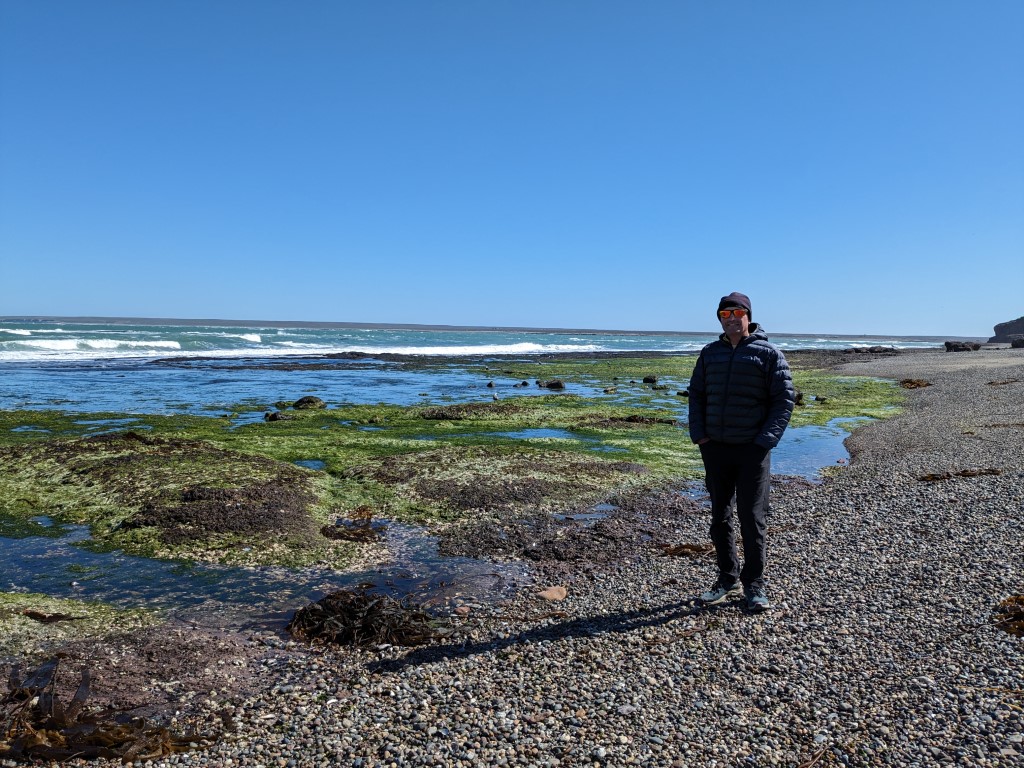




Puerto Deseado is a deep sea fishing town on the Deseado River that shelters a lot of sealife. Previously a hunting area for whales and seals, they are now thankfully focused on sealife viewing rather than killing. You can retrace the steps of explorers like Darwin and Magellan here. Of course we were most interested in seeing the penguin colonies. But they also had a coastal park that had an awesome cave, tidal pools and rocky beaches. We arranged a Zodiac tour through Darwin Expeditions to go out to Isla Pinguinos to see Rockhopper and Magellanic penguins along with Commerson’s dolphins, sea lions, fur seals, albatross, petrels and a beautiful island. These little black & white beauties are the smallest dolphins in existence. They’re really fast and hard to photograph. Our guide, Roxanne was fantastic and we learned so much about penguins and had tons of time to just sit closely with them observing their behavior. We learned that the male penguins usually arrive first in the Spring and they are the ones to choose the nesting spot and make a basic nest. Then the females arrive and they pair up. She lays 2 eggs a few days apart. The Magellanic penguins try to hatch both eggs whereas the Rockhoppers lay a small egg first followed by a larger one 4 days later and they generally use the first egg as a sacrificial egg and only incubate the larger one. The eggs take 40 days to hatch for the Magellanic and 30 for the Rockhoppers. Then starts the feeding after that! If they can’t produce an egg or at any point their partner doesn’t return, they will sometimes incubate a rock instead. We saw this. We also saw some confused penguins standing in a pool of water with their eggs beside them because their nest had flooded in a previous day’s rain. But we also saw nest maintenance activity with penguins waddling or hopping from nearby plants with mouths full of leaves and twigs. Cute! The two different types don’t really like each other but the Rockhopppers nest on seaside rocks and the Magellanic use the dirt among the rocks more inland so it works. We also saw a nest way inside the abandoned lighthouse! Crazy to think how he came up with that spot. I thought of it as city living vs country living.





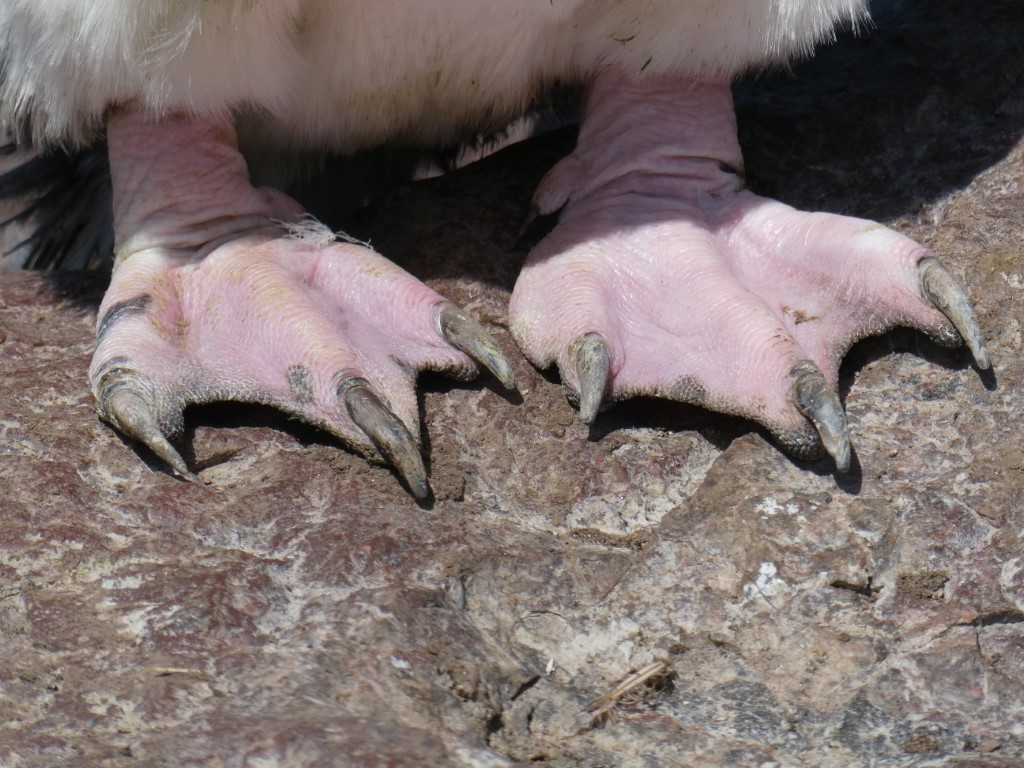
















This was the first time we’ve seen fur seals jumping out of the water at full speed like dolphins coming out to greet us in the zodiac. Didn’t know they did that. The sea lions were their usual slightly disgusting selves but they are so nice to watch. We remember when we sailed to the Galapagos, the sea lions used to like to sleep in our dinghy and they would completely trash it with their excrement. It would take me forever to clean it up and even then it still smelled. We zoomed back the 22km to port and had lunch as part of the tour. It was a great day.
One thing we quickly realized down here is the importance of seizing the day. I mean, we already try to live by that philosophy but now it’s even more important including being outside whenever the sun is shining & the wind is lighter. It’s hard because as we move south and east the sun is getting up before us. But, any good weather day is a day to celebrate and enjoy. We can’t seem to get away from some aspects of sailing. Now we’re once again looking at weather windows!
So the truck brakes waited till after the penguins and then Jon put on his work clothes and troubleshooted the front brakes again, except this time he knew he was disconnecting the front parking brake. So now we don’t have to worry about the front parking brakes clamping down as we’re driving. We will bring back a new valve from the US whenever we go back next. Then we will have 4 wheel parking brakes again but it really isn’t necessary to have them.









We got the truck all cleaned up in Puerto Deseado, then took it to Monumento Natural Bosques Petrificados- another petrified forest but this one was 150 million years ago when the whole area was a humid tropical forest and trees grew huge. A massive volcanic event buried them in ash and now the whole area is full of petrified logs coming to the surface. The 50km dirt road through a peach colored landscape into the park is lonely and beautiful and we camped on it. Guanacos, similar to a llama, are all over. On a morning walk we heard them whinny like horses do. There are also rheas, like an emu. I learned that the male creates a harem of females and then they lay all their eggs literally in one basket and then HE incubates them and raises the chicks!!! We really enjoyed this park and are so glad these places are preserved. We’re really enjoying the wildflowers too!
I promise this really is going to end soon.

Back on the coast, in the province of Santa Cruz, there is a scenic coastal road with tons of views and no one around anywhere. We found a near windless luxury spot under a cliff beside the water. We biked from there which was fun. One thing Argentina has is open space. If you want solitude, you can find it here. But then you can breeze into a town and get Syrian food! And that’s what we did in Puerto San Julian. And it was good.






We’re sporting a windblown look just like sailors but we have a big smile on our faces still. Jon keeps looking over at me as we’re driving saying isn’t it funny that after all of the years of talking about places like this and then all of the uncertainty of Covid outcomes that made it seem like a pie in the sky, it is now our reality. We feel really happy about the things we’ve been doing here.
THE END.



